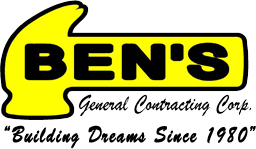~Alex Jackson
A comprehensive, well thought-out approach to building energy efficient multi-family homes will ultimately save owners, builders and designers time and money over the long haul. A recent assessment by the ACEEE showed how the nationwide effect of building energy efficient multi-family homes would save 3.4 billion dollars in utility costs. What’s more, the vast potential to save both water and reduce waste ultimately lowers operating costs and increases a property’s value, to say nothing of that fact that it allows builders and designers the opportunity to easily navigate the energy codes of their local municipalities.
Design
Building highly energy efficient multifamily family domiciles begins with design. Architects, builders and designers need to be familiar with the various steps in play to build n energy efficient multi-family home. This in turn will allow contractors to implements each facet of a job in an efficient and cost-effective manner.
Insulate
One of the most cost-effective strategies is to super-insulate a multi-family domicile. From design to implementation a comprehensive plan needs to be put in place to ensure not only the best insulation material for the particular materials but also to implement the most cutting edge materials to super insulate the building envelope.
Windows and Doors
Super insulating a multi-family home also involves choosing the finest most energy efficient windows and doors. A vast amount of heat and light are controlled by one’s choice of windows and doors. Beyond simply choosing the appropriate types and brands of windows and doors, builders should also take into account optimizing the sizes and orientation of windows and doors.
Fresh Air
Because a highly energy efficient multi-family home is virtually air-tight, sources of a fresh-filtered air are crucial. Implementing energy efficient ventilations systems, such as heat recovery ventilation or HRV, or energy recovery ventilation or ERV adroitly dispense with stale air, while recovering heat and returning fresh air into the building envelope.
Heating and Cooling
The proper choice of heating and cooling systems is vital for building and marinating an energy efficient building. One excellent choice is the mini-split heat pump. A mini-split pump are highly energy efficient and do not come with the exorbitant costs of thermal heat pumps nor the various shortcoming of forced-air systems. When it comes to heating water, it’s vital that designers employ a means to minimize hot water usage and employ the most cutting-edge and efficient water heating system that can meet the extended needs of a multi-family domicile.
Lighting
At once maximizing light for residents and reducing requisite energy use is a crucial feature of designing and building a multi-family building. LED lights have a come a long way in the past twenty years. And provide a superb match for this task they can meet a wide variety of lighting needs, last years longer than traditional lighting. Designers of course, also need to use and provide for natural lighting, which will dramatically increase a building’s energy efficiency.
Maximize Sunlight
Maximizing the use of sunlight for both heating and lighting purpose is a crucial element of designing an energy efficient multi-family building. Southward facing windows can significantly lower hearting costs over winter months. Properly placed and calibrated windows and doors provide both heat and light at no cost to an owner. Solar tempering as opposed to solar heating refers to a strategy that optimizes the passive use of sunlight for both heat and lighting purposes. Doing so can save an owner countless dollars in electric and winter heating utility costs.
Ben’s General Contracting Corporation, commercial and residential contractors, has been servicing greater New York since 1980.














